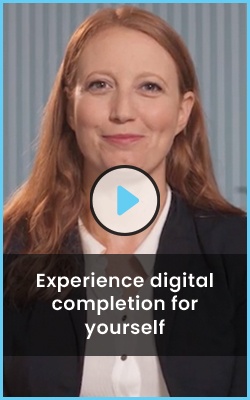Companies from diverse industries, including banking, insurance, auto finance, telco, law, and much more depend on customers filling out
forms to complete transactions. However, in certain circumstances, not all fields will be relevant to all
customers. Customers who are forced to go through lengthy
forms and figure out whether or not a question applies to them are more likely to get discouraged and confused. This leads to higher error rates, longer turnaround time, and a higher likelihood of abandonment.
On the other hand, companies that employ
conditional logic in smart forms are able to reveal to customers only the fields that pertain to their unique characteristics. This allows customers to breeze through forms that populate with fields based on their previous responses. Completing business processes is more nimble and streamlined for customers and agents alike.
What Is Conditional Logic, and How Does It Work?
In the old world of physical paperwork, it was considered the best practice to only include pages that are relevant to the customer.
Conditional logic applies this same reasoning to
electronic forms. Conditional logic enables customer-facing teams to generate dynamic forms that support a conditional workflow. Fields based on conditional logic only appear to the customer when a specified condition is met. Teams can hide conditional fields until the customer answers certain questions that trigger the fields to appear, such as ticking a checkbox or selecting a particular option from a dropdown.
This capability is crucial when you consider the consequences of non-conditional forms. Lengthy forms filled with non-applicable fields lead to poor completion rates, missing information, longer completion times, and even compliance issues. Ultimately, this hurts the sales conversion rate and hampers efficiency.
A conditional field can be pre-set to appear when conditions such as the following are met:
- The customer enters a particular response in the field, prompting the customer to answer an additional question
- The customer ticks a checkbox that requires additional information from the customer
- The customer chooses "Other" in a dropdown, requiring him or her to provide more details
Here is a typical process for setting up smart forms based on conditional logic:
- Create a rule for the trigger field. (E.g., If the customer enters “US citizen” then the field will populate asking for social security number).
- Select which additional fields to show if the customer’s response in the trigger field complies with the rule (the fields can be of any type: checkboxes, radio buttons, dropdowns, or text responses can all trigger a conditional workflow).
- Create several rules for a trigger field based on the customer’s response. For instance, if the customer responds “X” they will be shown field “A.” If the customer responds “Y,” they will be shown field “B.”
Common Types of Conditions and Responses
Here are some common types of conditions that may be encountered when conditional logic is applied to a form. Many of these can be encountered across different verticals:
- If over/under age 18
- If existing/new customer
- If there is a co-applicant
- If in good standing
- If US citizen
- If non-US citizen
- If pre-existing health condition exists
Here are some of the common responses based on the conditions set:
- Show/hide field (e.g., credit card or bank)
- Show/hide options (e.g., eligible or not)
- Show/hide entire sections/clauses (e.g., if certain state, then more declarations)
How Conditional Logic Helps Different Businesses
The great thing about conditional logic is that it has endless applications for all kinds of forms across different verticals. Here are just some of the use cases we’ve identified based on our customers’ usage of
Lightico’s smart forms:
-
P&C Insurance
- Sales: Depending on which insurance package a customer ticks, relevant fields appear.
- Claims: During the FNOL process, customers who identify a particular incident will only questions that pertain to their situation (e.g., flood, fire, car damage).
2. Health Insurance
- Enrollment: Customers who state they have a certain pre-existing condition will automatically see additional followup questions
3. Banking
- Account opening and loan applications: Only if the customer states they have a co-signer do fields appear requesting information from that cosigner.
4. Auto Lending
- Originations: Customers who provide a low credit score trigger different questions and requests for additional stips.
- Servicing (deferments/extensions): Depending on the state selected in an application, the correct extension form will be sent over to the consumer automatically (only nine states require a signature for an extension request).
5. Law
- Class action lawsuit: Fields appear or are hidden based on the customer’s reported state, age (18+), etc.
Benefits of Incorporating Conditional Logic
- Boost turnaround time: Customers power through forms quickly when they only see the fields that are relevant to their needs or situations.
- Increase completion rate: Irrelevant fields are frustrating and confusing, making the form look more intimidating and overwhelming than it really is. This can lead customers to abandon or forget about a form, even if they intend to revisit it later.
- Reduce errors: Customers that are exposed to fields that are irrelevant to their situations are prone to making errors, such as filling out sections that don’t apply to them.
- Improve NPS: Customer experience, commonly measured by net promoter score (NPS) is enhanced when customer friction is kept to a minimum. Shorter, more relevant forms significantly reduce that NPS-hurting friction.
- Improve eNPS: The employee net promoter score is boosted through the simplified, automated workflow.
Personalized Forms Are More Effective Forms
Today’s customers expect highly personalized and relevant experiences when interacting with
businesses. This includes the form-filling process, which should be responsive, dynamic, and tailored to the unique circumstances and characteristics of the customer. When
businesses switch to smart forms that rely on conditional logic, they ensure more streamlined and accurate journeys––getting more customers to completion, faster.



